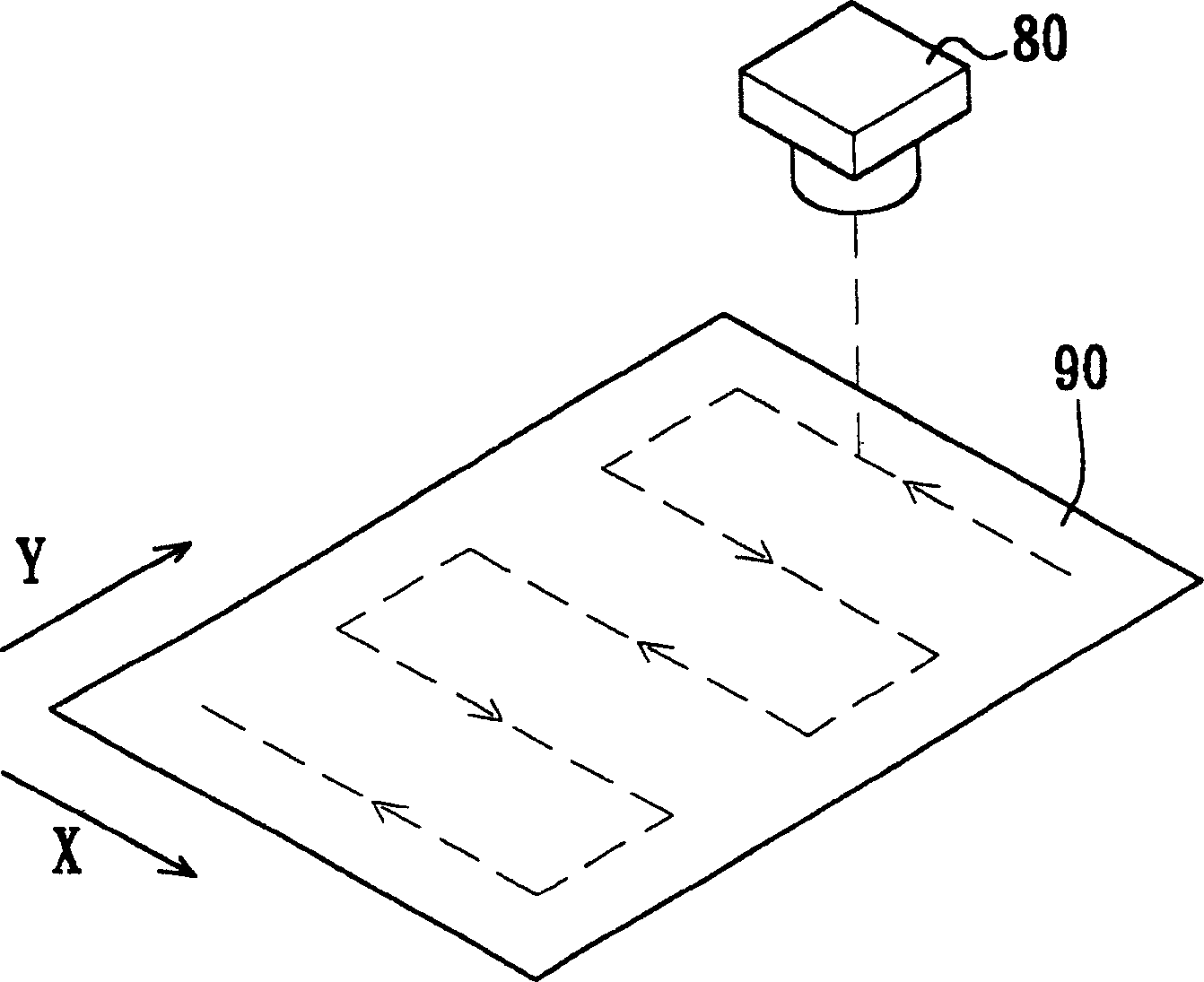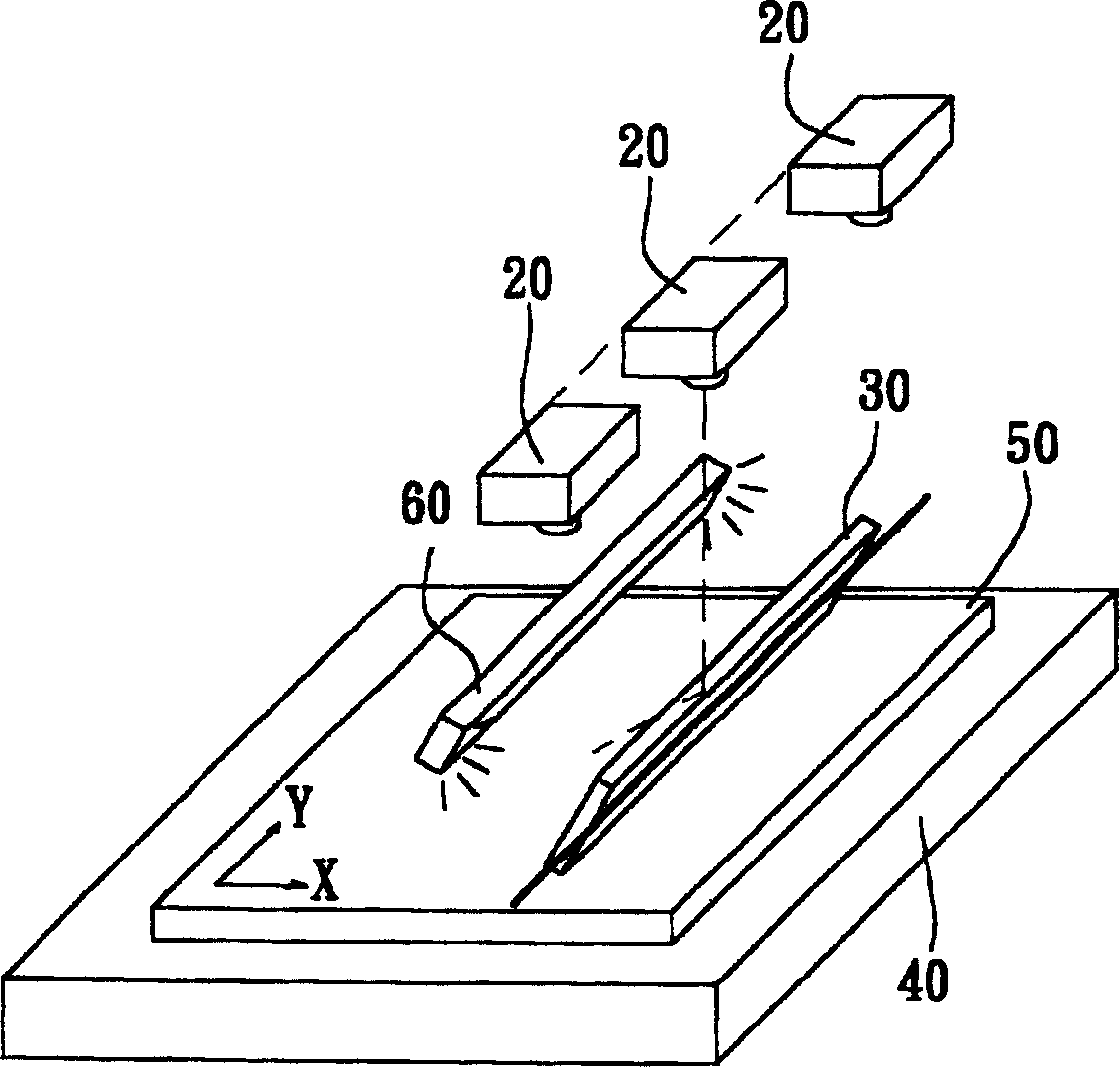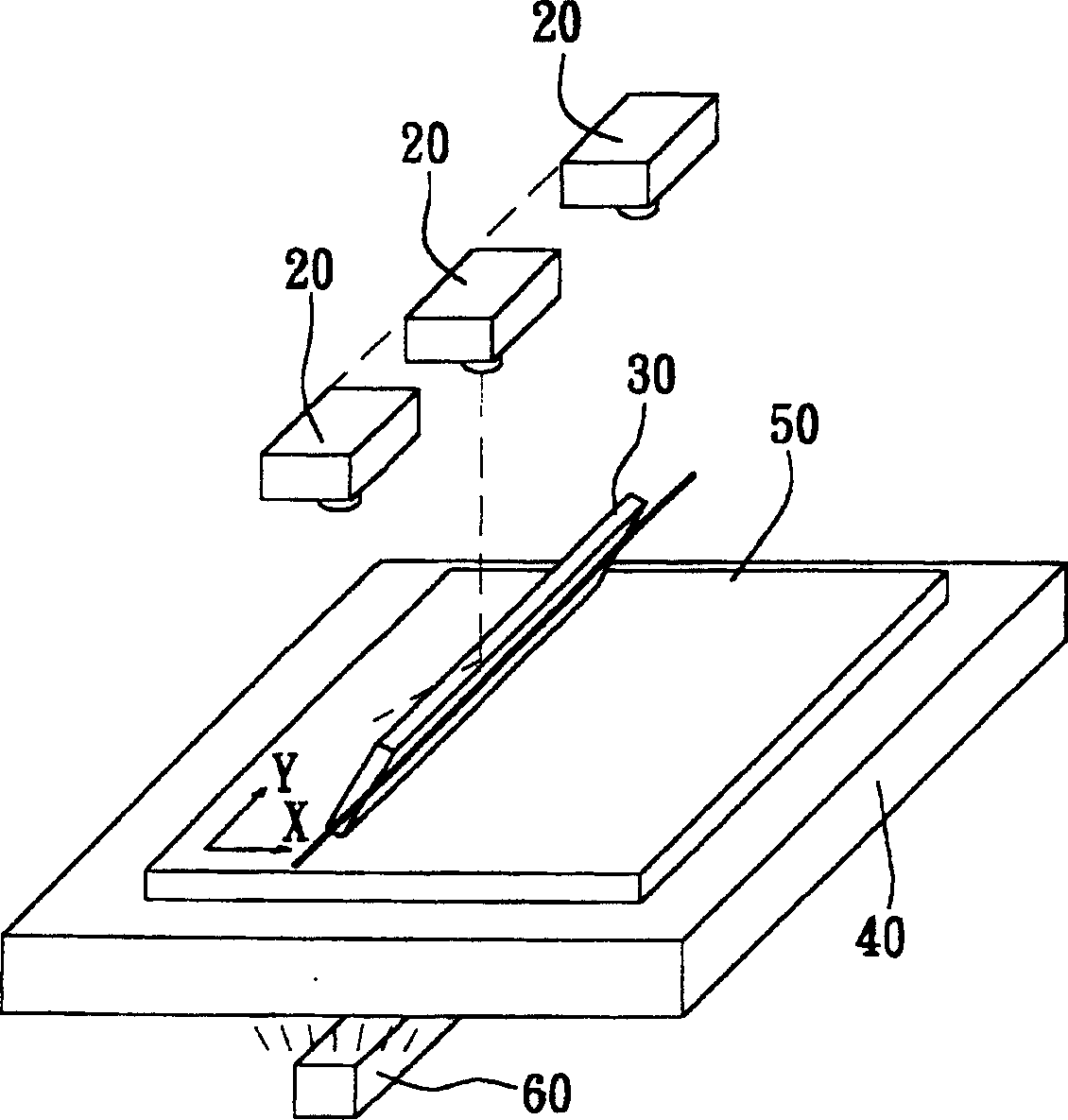Optical device for testing squint angle of faceplate
A technology of optical detection and oblique viewing angle, which is applied in the direction of using optical devices, measuring devices, and electromagnetic/magnetic devices to transmit sensing components, etc.
- Summary
- Abstract
- Description
- Claims
- Application Information
AI Technical Summary
Problems solved by technology
Method used
Image
Examples
Embodiment Construction
[0031] Please refer to Figure 2a , which shows a perspective view of an oblique viewing angle optical detection device for a panel according to the present invention. As shown in the figure, the oblique viewing angle optical detection device of the panel of the present invention is to detect the characteristics or defects of a panel by scanning the oblique viewing angle, which includes: a frame (not shown in the figure); at least one camera device 20; a A strip reflector 30 ; a linear lighting device 60 ; and a panel carrier 40 are combined.
[0032]Wherein, the frame is used to support the imaging device 20 and the mirror 30; the imaging device 20 is placed on the frame, and its number can be one to several and preferably one or a row of CMOS line scan cameras or one Or a row of CCD line scan cameras, and an angle θ is presented between the vertical line of sight of the imaging device 20 and the mirror surface of the reflector 30; The direction is parallel to the axial dir...
PUM
 Login to View More
Login to View More Abstract
Description
Claims
Application Information
 Login to View More
Login to View More - R&D
- Intellectual Property
- Life Sciences
- Materials
- Tech Scout
- Unparalleled Data Quality
- Higher Quality Content
- 60% Fewer Hallucinations
Browse by: Latest US Patents, China's latest patents, Technical Efficacy Thesaurus, Application Domain, Technology Topic, Popular Technical Reports.
© 2025 PatSnap. All rights reserved.Legal|Privacy policy|Modern Slavery Act Transparency Statement|Sitemap|About US| Contact US: help@patsnap.com



